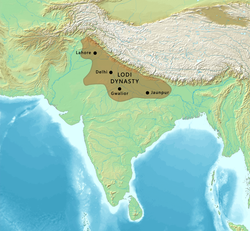| Part of a series on |
| Pashtuns |
|---|
| |
The following is a list of Pashtun or Afghan empires and dynasties. It includes states, princely states, empires and dynasties in the regions of Central, Western and South Asia. This list also includes rulers and dynasties who are of disputed origin, possibly originating from Afghan or other origins.




